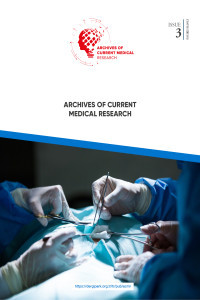
Abstracting and Indexing: Index Copernicus, Asos İndeks, Türkiye Atıf Dizini, TurkMedline
Archives of Current Medical Research (ACMR) is an international, peer-reviewed, open-access scientific journal for publication of original medical, pre-clinical and clinical research, case reports, reviews and letters about all areas of medicine, dentistry and related medical disciplines. Each manuscript submitted to ACMR is primarily taken into editorial review. After that, the peer-review process begins for the selected manuscripts. ACMR uses double-blind review concealing author names from the reviewers and vice versa throughout the reviewing process. There are no submission or publication charges to submit your manuscript to ACMR. Manuscripts must be submitted electronically using the following link:
https://dergipark.org.tr/tr/journal/3615/submission/step/manuscript/new
There are no submission or publication charges to submit your manuscript.
The authors have to submit their ORCID numbers during the submission.
This journal provides instant open access to all content, bearing in mind the fact that presenting research free to the public supports a greater global exchange of knowledge.
Articles "published" online are freely available to the public on the Internet.
2024 - Cilt: 5 Sayı: 1
Archives of Current Medical Research (ACMR) provides instant open access to all content, bearing in mind the fact that presenting research
free to the public supports a greater global exchange of knowledge.

